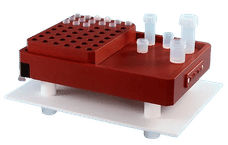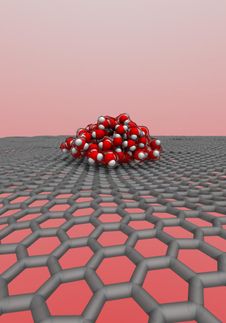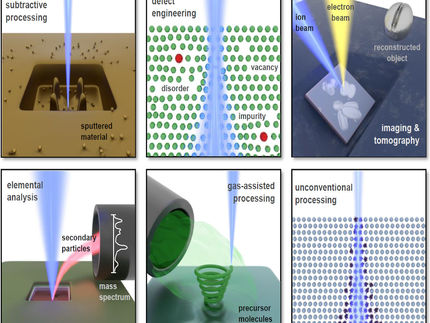Graphene used to create world's smallest transistor
Researchers have used the world's thinnest material to create the world's smallest transistor, one atom thick and ten atoms wide. Reporting their peer-reviewed findings in Science, Dr Kostya Novoselov and Professor Andre Geim from The School of Physics and Astronomy at The University of Manchester show that graphene can be carved into tiny electronic circuits with individual transistors having a size not much larger than that of a molecule.
The smaller the size of their transistors the better they perform, say the Manchester researchers.
In recent decades, manufacturers have crammed more and more components onto integrated circuits. As a result, the number of transistors and the power of these circuits have roughly doubled every two years. This has become known as Moore's Law.
But the speed of cramming is now noticeably decreasing, and further miniaturisation of electronics is to experience its most fundamental challenge in the next 10 to 20 years, according to the semiconductor industry roadmap. At the heart of the problem is the poor stability of materials if shaped in elements smaller than 10 nanometres in size. At this spatial scale, all semiconductors - including silicon - oxidise, decompose and uncontrollably migrate along surfaces like water droplets on a hot plate.
Four years ago, Geim and his colleagues discovered graphene, the first known one-atom-thick material which can be viewed as a plane of atoms pulled out from graphite. Graphene has rapidly become the hottest topic in physics and materials science.
Now the Manchester team has shown that it is possible to carve out nanometre-scale transistors from a single graphene crystal. Unlike all other known materials, graphene remains highly stable and conductive even when it is cut into devices one nanometre wide.
Graphene transistors start showing advantages and good performance at sizes below 10 nanometres - the miniaturization limit at which the Silicon technology is predicted to fail.
"Previously, researchers tried to use large molecules as individual transistors to create a new kind of electronic circuits. It is like a bit of chemistry added to computer engineering", says Novoselov. "Now one can think of designer molecules acting as transistors connected into designer computer architecture on the basis of the same material (graphene), and use the same fabrication approach that is currently used by semiconductor industry".
"It is too early to promise graphene supercomputers," adds Geim. "In our work, we relied on chance when making such small transistors. Unfortunately, no existing technology allows the cutting materials with true nanometre precision. But this is exactly the same challenge that all post-silicon electronics has to face. At least we now have a material that can meet such a challenge."
"Graphene is an exciting new material with unusual properties that are promising for nanoelectronics", comments Bob Westervelt, professor at Harvard University. "The future should be very interesting".
Topics
Organizations
Other news from the department science
These products might interest you

Laboratory Heating Plates by AHF analysentechnik
Laboratory heating plates made of graphite - acid-resistant & durable
Discover the advantages of metal-free heating plates for your ICP-MS analyses

OHAUS Laboratory equipment by Ohaus
Do More with OHAUS Laboratory Equipment
Do Not Limit Yourself to Just Measurement! Discover Ingenious Portfolio

Hot plate stirrers by Velp Scientifica
Hot plate stirrers for a great range of applications, from basic to cloud-controlled ones
A complete range that features new standards for safety, efficiency, and ease of use

Get the chemical industry in your inbox
By submitting this form you agree that LUMITOS AG will send you the newsletter(s) selected above by email. Your data will not be passed on to third parties. Your data will be stored and processed in accordance with our data protection regulations. LUMITOS may contact you by email for the purpose of advertising or market and opinion surveys. You can revoke your consent at any time without giving reasons to LUMITOS AG, Ernst-Augustin-Str. 2, 12489 Berlin, Germany or by e-mail at revoke@lumitos.com with effect for the future. In addition, each email contains a link to unsubscribe from the corresponding newsletter.
Most read news
More news from our other portals
Last viewed contents
X-ray_astronomy
Quantum_turbulence
Color_superconductivity
Detecting material defects in ship propellers
Landau-Hopf_theory_of_turbulence
Kutta_condition
Ammonium_thioglycolate





























































